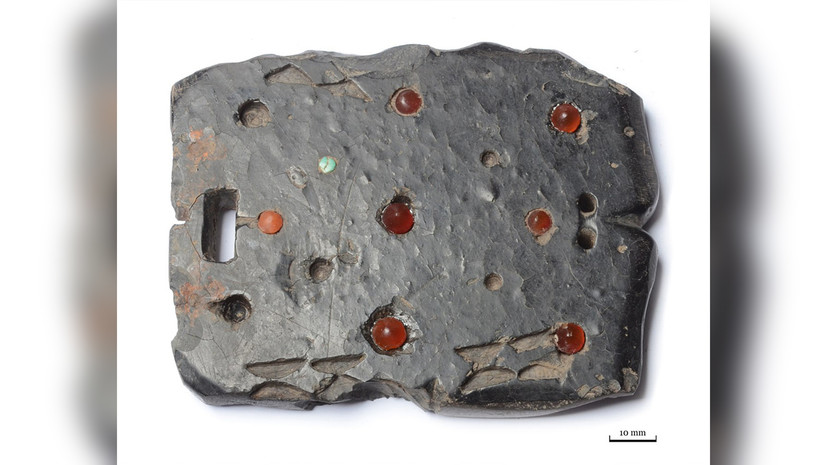Scientists from St. Petersburg State University, together with colleagues from the Institute of History and Culture of the Russian Academy of Sciences and the Hermitage, have established the materials from which the buckles of the ancient nomadic Xiongnu people found by archaeologists in Tuva were made. This was reported to RT by the press service of St. Petersburg State University. The results of the study are published in the Journal of Archaeological Science: Reports.
As noted by the authors of the work, the Xiongnu were nomads who inhabited the steppes north of China from 220 BC to the II century A.D. During the excavations of the expedition of the IHMC RAS on the territory of the Republic of Tuva, artifacts of the culture of this people were found — large belt buckles of black color interspersed with various minerals of bright colors. However, the composition of the material from which the items were made was difficult to determine due to their dilapidation.
The team applied a number of state-of-the-art research techniques, such as Romanov spectroscopy and X-ray phase analysis, to study the composition of the buckles. As a result, scientists found out that the basis of the ancient decoration of the nomads consisted of fossil coal boghead.
- Gettyimages.ru
- © keni1
"The studies carried out made it possible to determine the material very accurately even in the case when the object was severely degraded, as is the case with archaeological finds. For example, from the presence of the mineral aragonite, we were able to understand that the white inlay was made of mother-of-pearl. The base of the buckles consists of fossil charcoal of the boghead type, and their inlay of white, red, and blue colors is made of mother-of-pearl, carnelian of various shades, turquoise and fuchsite," said Nikolay Kurganov, one of the authors of the study, director of the St Petersburg University Centre for the Study, Preservation, Restoration and Actualisation of Cultural Heritage Sites, and senior lecturer at St Petersburg University.
According to the researchers, boghead is a material that is dominated by algae, and it is capable of deforming. Therefore, it is necessary not only to interact very carefully with the found artifacts, but also to carefully approach the selection of restoration compositions so as not to damage the material with solvents.
The scientists note that their research methods made it possible to carry out all the necessary measurements without taking samples and damaging the surface of ancient artifacts.

